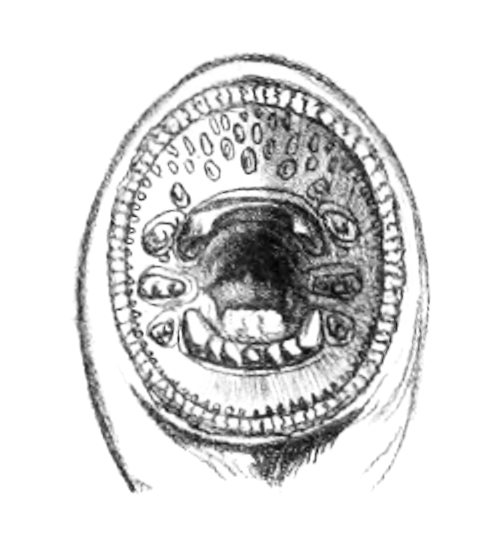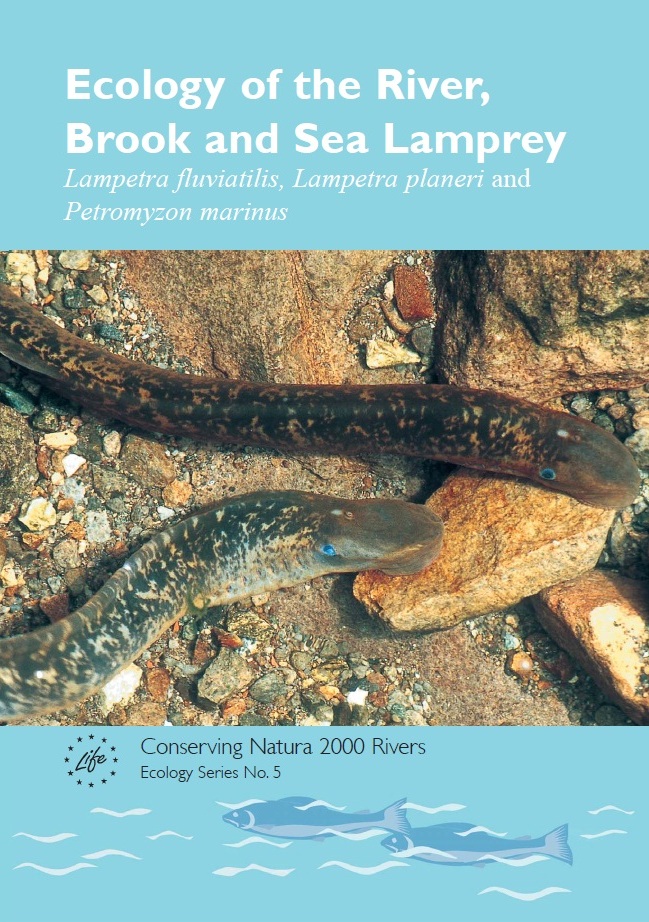Biodiversity
Related Links
- ARKive
- Joint Nature Conservation Committee
- Life in UK Rivers: Ecology of the River, Brook and Sea Lamprey
Latest News
A Starring Role for Nantclwyd’s Lesser Horseshoe Bats
22.05.2015
Living Landscape Brought Back to Life
05.12.2014
More Information
Facebook Page
River lamprey
The river lamprey is one of three species of lamprey in Denbighshire. These primitive jawless fish gain nutrition by feeding on the body tissues of other fish.
Description and identification: Lamprey have long, slender bodies and a round sucker-like mouth. The skeleton is made of cartilage. Adult river lamprey measure between 17 and 50cm in length. They can be distinguished from the other two British lamprey species (sea and brook lamprey) by their two separate dorsal fins.
Habitat: River lamprey are found in clean rivers, estuaries and the sea at different life-stages.
Diet: Adult lamprey prey on other fish. They use their mouths to secure themselves to the bodies of other fish and rasp away at their flesh, which usually kills the host fish. Lamprey larvae feed on detritus.
 Ecology and reproduction: River lamprey are migratory, with adults travelling from the sea to freshwater to spawn. Triggered by water temperature, river lamprey spawn in the spring in rivers in large aggregations, resulting in the death of the adults. The larvae, known as ‘ammocoetes’, undergo metamorphosis after two and a half to three and a half years. As juveniles they over-winter in the river then migrate to sea in spring. The adult fish remain in the sea for around two years before migrating back to rivers to spawn.
Ecology and reproduction: River lamprey are migratory, with adults travelling from the sea to freshwater to spawn. Triggered by water temperature, river lamprey spawn in the spring in rivers in large aggregations, resulting in the death of the adults. The larvae, known as ‘ammocoetes’, undergo metamorphosis after two and a half to three and a half years. As juveniles they over-winter in the river then migrate to sea in spring. The adult fish remain in the sea for around two years before migrating back to rivers to spawn.
Distribution: River lamprey are widespread in Western Europe, including the UK.
Threats: Lamprey are vulnerable to changes in water quality, such as pollution, and to modifications to their habitat – particularly in-river barriers that prevent their migration. River lamprey populations have declined over the past century.
Status: This species is protected under European and UK law and is a priority for conservation action at a UK and Wales level. It is a qualifying feature of the River Dee and Bala Lake Special Area of Conservation.




